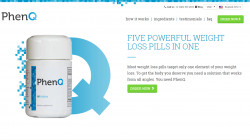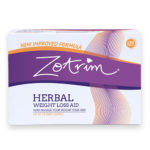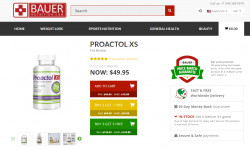As someone who has struggled with allergies for as long as I can remember, I know firsthand the misery of constant sneezing, itchy eyes, and a stuffy nose.
Over the years, I’ve tried just about every over-the-counter antihistamine on the market, but I’ve found that the side effects can be just as bad as the allergies themselves.
That’s why I started exploring natural remedies for my allergy symptoms. And let me tell you. There are some powerful plant-based antihistamines out there! They are effective at relieving allergy symptoms and come with little to no side effects, making them a safer and more sustainable option in the long run.
In this article, I’m excited to share some of the best natural antihistamines I’ve found through my research and experimentation.
From herbs to spices to fruits, these natural remedies can help you combat your allergy symptoms and breathe a little easier. So, let’s dive in and discover the amazing world of natural antihistamines!
1. Best Natural Antihistamines
1.1 Quercetin
Quercetin is a flavonoid that has potent anti-inflammatory and antioxidant properties. It also acts as a natural antihistamine by inhibiting the release of histamine, a compound responsible for many allergy symptoms such as runny nose, sneezing, and itchy eyes.
In addition, quercetin can help stabilize the mast cells responsible for the release of histamine in the body, reducing the likelihood of an allergic reaction. It can also help to reduce inflammation in the body, which is often a result of an allergic reaction.
Here are some ways to take quercetin:
- Food sources – Quercetin is found naturally in many fruits and vegetables, such as apples, onions, citrus, and berries. Incorporating these foods into your diet can help increase your quercetin intake.
- Supplements – Quercetin supplements are available in capsule or tablet form. The recommended dosage is typically around 500-1000mg daily, divided into two or three doses. It’s best to take quercetin supplements with meals to improve absorption.1
1.2 Garlic
Garlic (Allium sativum) is a common ingredient in many cuisines and has been used for centuries for its medicinal properties. Garlic contains allicin, which has anti-inflammatory and immune-boosting effects, making it a good natural option for reducing allergy symptoms.
Garlic has been found to have antihistamine effects by inhibiting the release of histamine and other inflammatory compounds, which can help to reduce allergy symptoms such as sneezing, itching, and a runny nose.
Here are some ways to take garlic:
- Raw garlic – Raw garlic can be chopped or crushed and added to food such as soups, stews, salads, and stir-fries. Raw garlic has the highest concentration of allicin, which can help to boost the immune system and reduce inflammation.
- Garlic supplements – Garlic supplements, such as capsules or extracts, are available at health food stores. Follow the instructions on the label, and do not exceed the recommended dosage.
- Garlic oil – Garlic oil can be used topically to reduce inflammation and allergy symptoms such as skin rash or hives. Garlic oil can be applied directly to the affected area or mixed with a carrier oil such as coconut oil.
1.3 Stinging Nettle
Stinging nettle is a natural antihistamine that effectively reduces the symptoms of allergies, such as itching, sneezing, and nasal congestion. Stinging nettle contains bioactive compounds, such as histamine, serotonin, and acetylcholine, which can help to reduce the release of histamine in the body.
Here are some ways to take stinging nettle:
- Tea – Stinging nettle tea is a popular way to take this herb. You can steep 1-2 teaspoons of dried nettle leaves in a cup of hot water for 5-10 minutes and drink 2-3 cups daily.
- Capsules or tablets – Stinging nettle is available in capsule or tablet form. The recommended dosage varies depending on the form you choose. For example, the recommended dosage for stinging nettle capsules is usually 300-500 mg, taken 2-3 times daily.
- Tinctures – Stinging nettle tinctures are alcohol-based extracts of the herb. You can take them by adding a few drops of water or juice.
1.4 Butterbur
Butterbur (Petasites hybridus) is a plant native to Europe, Asia, and North America. Its root extract has been used for centuries in traditional medicine to treat various ailments, including allergies and migraines.
The active compounds in butterbur, called petasins, have been shown in studies to inhibit the release of histamine and other inflammatory substances in the body. This makes butterbur an effective natural remedy for allergic rhinitis and other allergies.
Here are some ways to take butterbur:
- Capsules – Butterbur is available in capsule form, which is a convenient way to take it. Follow the instructions on the label, and do not exceed the recommended dosage.
- Tea – For several minutes, you can make butterbur tea by steeping the dried root in boiling water. However, it’s important to note that raw butterbur contains pyrrolizidine alkaloids, which can be toxic to the liver. Look for butterbur products that have been processed to remove these alkaloids, such as PA-free butterbur.
- Tincture – Butterbur tincture is made by soaking the root in alcohol, which extracts the active compounds. Follow the instructions on the label, and do not exceed the recommended dosage.
1.5 Ginger
Ginger (Zingiber officinale) is a flowering plant widely used as a spice and a natural remedy for various ailments. Ginger has been found to have antihistamine properties, which makes it a good natural option for reducing allergy symptoms.
Ginger contains a compound called gingerol, which has anti-inflammatory properties. When the immune system responds to allergens, it releases histamine and other inflammatory substances. Ginger can help to reduce the release of these substances, which can alleviate allergy symptoms.
Here are some ways to take ginger:
- Fresh ginger – You can add fresh ginger to your food or drink by grating it or slicing it thinly. Ginger can be used in soups, stir-fries, smoothies, and tea. Ginger can also be chewed raw, but it may be too spicy for some people.
- Ginger tea – Ginger tea can be made by grating or slicing ginger in boiling water for several minutes. You can add honey or lemon to taste. Drinking ginger tea can help to soothe the throat and reduce coughing.
- Ginger supplements – Ginger supplements, such as capsules or extracts, are available at health food stores. Follow the instructions on the label, and do not exceed the recommended dosage.
1.6 Turmeric
Turmeric (Curcuma longa) is a root that belongs to the ginger family and is commonly used in Indian and Middle Eastern cuisine. Turmeric contains a compound called curcumin, which has anti-inflammatory properties and has been found to have antihistamine effects, making it a good natural option for reducing allergy symptoms.
Curcumin can help to inhibit the release of histamine, which can help to alleviate these symptoms.
Here are some ways to take turmeric:
- Turmeric powder – Turmeric powder can be used in cooking to add flavor and color to dishes. It can be used in curries, soups, stews, and marinades.
- Turmeric tea – Turmeric tea can be made by steeping turmeric powder or grating fresh turmeric in boiling water. You can add honey, lemon, or ginger to taste.
- Turmeric supplements – Turmeric supplements, such as capsules or extracts, are available at health food stores. Follow the instructions on the label, and do not exceed the recommended dosage.
1.7 Pineapple
Pineapple (Ananas comosus) is a tropical fruit rich in vitamins, minerals, and antioxidants. Pineapple contains an enzyme called bromelain, which has anti-inflammatory properties and has been found to have antihistamine effects, making it a good natural option for reducing allergy symptoms.
Bromelain can help reduce inflammation and swelling in the body, alleviating allergy symptoms such as nasal congestion, sinus pressure, and sneezing. Bromelain can also help to improve digestion and boost the immune system.
Here are some ways to take pineapple:
- Fresh pineapple – It can be eaten on its own or used in recipes such as salads, smoothies, and desserts. Pineapple can also be grilled or roasted to enhance its flavor.
- Pineapple juice – Pineapple juice can be consumed on its own or used in recipes such as smoothies and cocktails. Pineapple juice can also be added to marinades and sauces to add a sweet and tangy flavor.
- Bromelain supplements – Bromelain supplements, such as capsules or tablets, are available at health food stores. Follow the instructions on the label, and do not exceed the recommended dosage.
1.8 Apple Cider Vinegar
Apple cider vinegar is a type of vinegar made from apples. It is made by fermenting apple cider with yeast and bacteria, which turns the sugars in the apple cider into acetic acid. Apple cider vinegar is often used as a natural remedy for various health conditions, including allergies.
Apple cider vinegar is believed to have antihistamine properties due to its ability to reduce inflammation in the body. Allergies are caused by an overactive immune system response to allergens, leading to inflammation and histamine release. Apple cider vinegar can help to reduce inflammation and thus reduce allergy symptoms.
Here are some ways to take apple cider vinegar:
- Diluted apple cider vinegar – Mix 1-2 tablespoons of apple cider vinegar with a glass of water and drink it before meals. This can help to improve digestion and reduce inflammation in the body.
- Apple cider vinegar tea – Add 1-2 tablespoons of apple cider vinegar to a cup of hot water and stir in honey or lemon to taste. This can help to soothe the throat and reduce coughing.
- Apple cider vinegar capsules – Apple cider vinegar capsules are available at health food stores. Follow the instructions on the label, and do not exceed the recommended dosage.
1.9 Licorice root
Licorice root (Glycyrrhiza glabra) is a herb used for centuries in traditional medicine to treat various health conditions. Licorice root contains a compound called glycyrrhizin, which has anti-inflammatory and antihistamine effects. That makes it a good natural option for reducing allergy symptoms.
Here are some ways to take licorice root:
- Licorice tea – Licorice tea can be made by steeping licorice root in boiling water for 5-10 minutes. You can add honey or lemon to taste. Licorice tea can help to soothe the throat and reduce coughing.
- Licorice supplements – Licorice supplements, such as capsules or extracts, are available at health food stores. Follow the instructions on the label, and do not exceed the recommended dosage.
- Licorice root candy – Licorice root candy is a traditional way to consume licorice root. However, it’s important to note that licorice candy may contain high amounts of sugar and artificial ingredients, which can negatively affect health.
1.10 Elderberry
Elderberry (Sambucus nigra) is a dark purple berry that grows on the elder tree. Elderberry has been used for centuries in traditional medicine to treat various health conditions, including colds, flu, and allergies. Elderberry contains flavonoids and anthocyanins, which have antioxidant and anti-inflammatory properties, making it a good natural option for reducing allergy symptoms.
Elderberry has been found to have antihistamine effects by inhibiting the release of histamine, which can help to reduce inflammation and allergy symptoms such as sneezing, itching, and runny nose.
Here are some ways to take elderberry:
- Elderberry syrup
Elderberry syrup is a concentrated form of elderberry that can be taken by a teaspoon or added to water, tea, or smoothies. Elderberry syrup is available at health food stores, or you can make your own by boiling elderberries with water and honey or another natural sweetener.
- Elderberry tea
Elderberry tea can stele dried elderberries in boiling water for 5-10 minutes. You can add honey or lemon to taste. Elderberry tea can help to boost the immune system and reduce inflammation.
- Elderberry supplements
Elderberry supplements, such as capsules or gummies, are available at health food stores. Follow the instructions on the label, and do not exceed the recommended dosage.
2. FAQs
Do you have more questions about natural antihistamines? Here are some of them!
2.1 What are natural antihistamines?
Natural antihistamines are substances found in nature that can help reduce the body’s production of histamine, which causes allergy symptoms. They can be found in foods, supplements, and herbs and provide a natural alternative to conventional allergy medications.
2.2 What are the benefits of using natural antihistamines?
Using natural antihistamines can provide a range of benefits, including relief from allergy symptoms, without the side effects of some conventional medications. They can also help boost the immune system, reduce inflammation, and provide other health benefits.
2.3 What are some common natural antihistamines, and how do they work?
Some natural antihistamines include quercetin, butterbur, ginger, turmeric, pineapple, apple cider vinegar, licorice root, elderberry, garlic, and chamomile. They work by blocking the production of histamine or reducing inflammation, which can help reduce allergy symptoms.
2.4 Are natural antihistamines safe to use?
While natural antihistamines are generally considered safe, some can interact with medications or cause side effects. It’s important to talk to your doctor before using any new supplements or remedies, especially if you have a pre-existing medical condition or are taking other medications.
2.5 How should I use natural antihistamines?
Using natural antihistamines can vary depending on the specific remedy or supplement. They can be taken orally as a supplement or in the form of foods or teas or applied topically as essential oils. Follow the instructions on the label, and do not exceed the recommended dosage.
2.6 Can I use natural antihistamines to treat severe allergies?
While natural antihistamines can relieve allergy symptoms, they may not be enough to treat severe allergies. Talking to your doctor about other treatment options for severe allergies is important.
2.7 How long does it take for natural antihistamines to work?
The time it takes for natural antihistamines to work can vary depending on the individual and the specific remedy or supplement. Some people may experience relief within minutes, while others may need to use them for several days before seeing results.
2.8 Are there any side effects or risks associated with natural antihistamines?
While natural antihistamines are generally considered safe, they can cause side effects or interact with medications. It’s important to talk to your doctor before using any new supplements or remedies, especially if you have a pre-existing medical condition or are taking other medications.
2.9 Should I talk to my doctor before using natural antihistamines?
Yes, it’s important to talk to your doctor before using any new supplements or remedies, especially if you have a pre-existing medical condition or are taking other medications. They can help you determine the best course of treatment for your allergies and ensure that the remedies you use are safe and effective.
3. Final Thoughts
As someone who has struggled with allergies for as long as I can remember, finding relief through natural antihistamines has been a game-changer. Not only do they provide relief without the drowsy side effects of conventional allergy medications, but they also offer a host of other health benefits.
From the anti-inflammatory properties of turmeric to the immune-boosting effects of elderberry, natural antihistamines offer a holistic approach to allergy relief.
Of course, it’s important to remember that natural remedies may not work for everyone and that severe allergies should always be treated under the guidance of a medical professional.
But for those looking for a more natural, gentle way to manage their allergies, exploring the many options available can be an eye-opening and life-changing experience.
So why not try it and see if natural antihistamines could be the key to breathing easier and enjoying life to the fullest?







